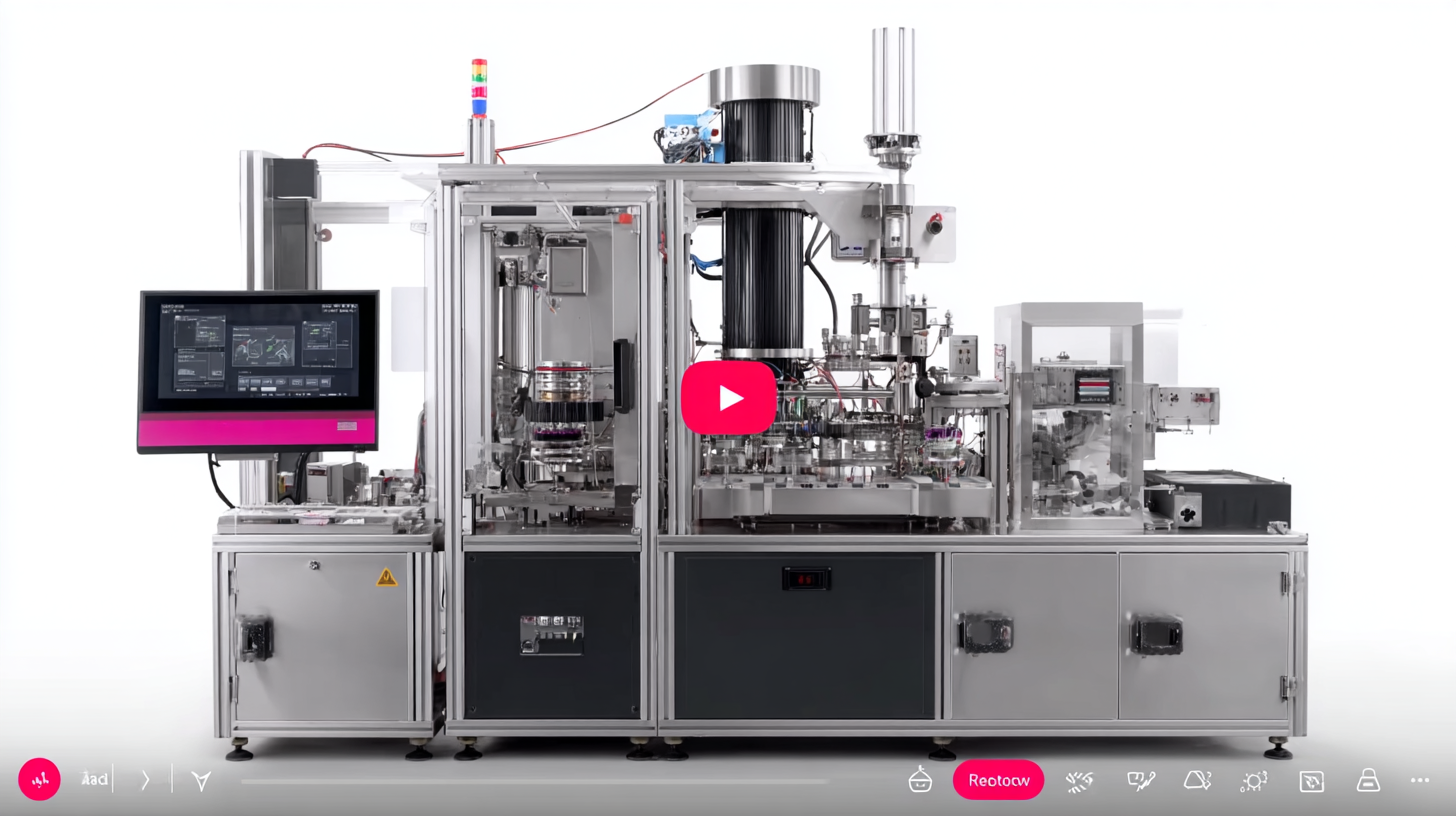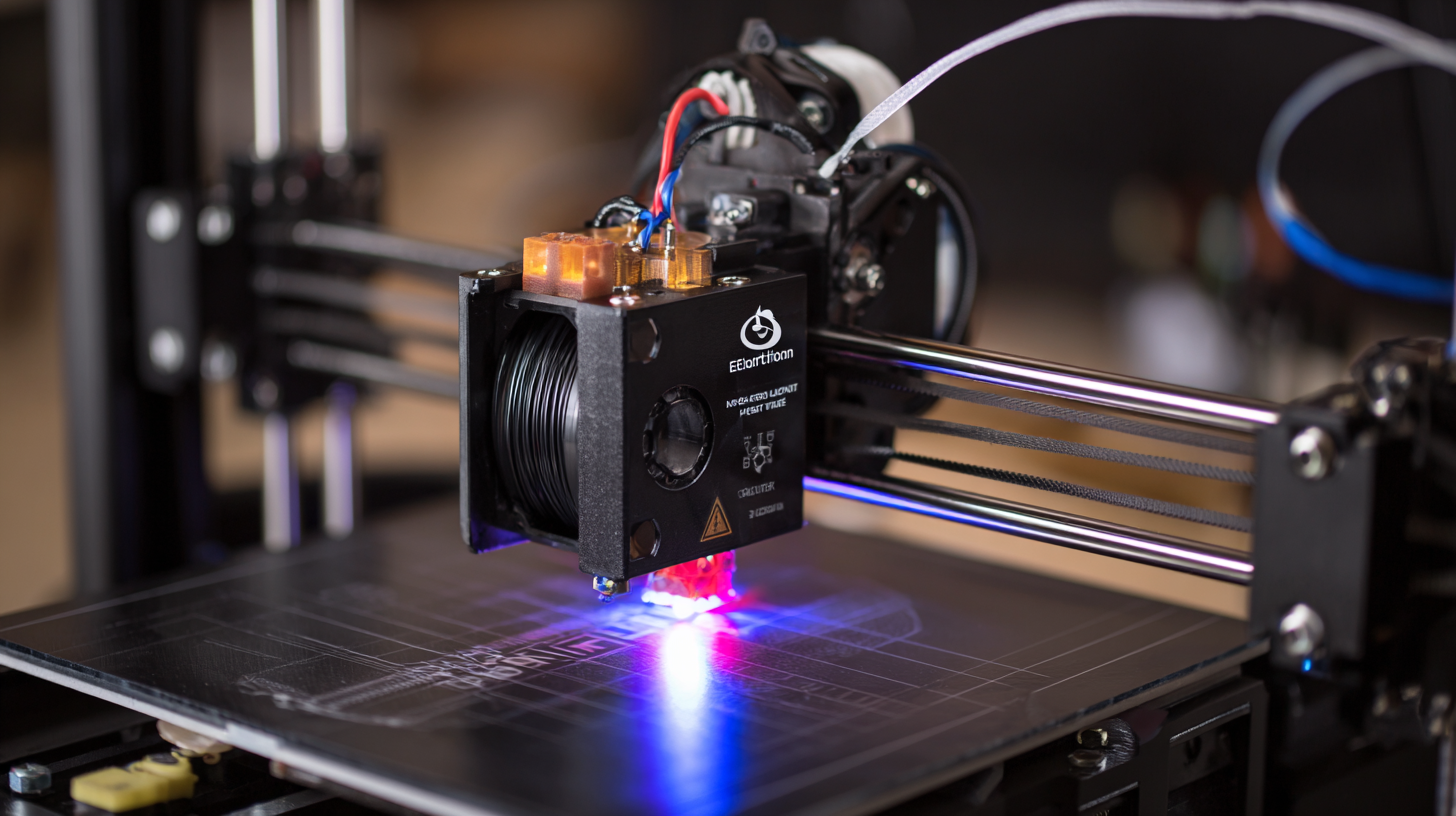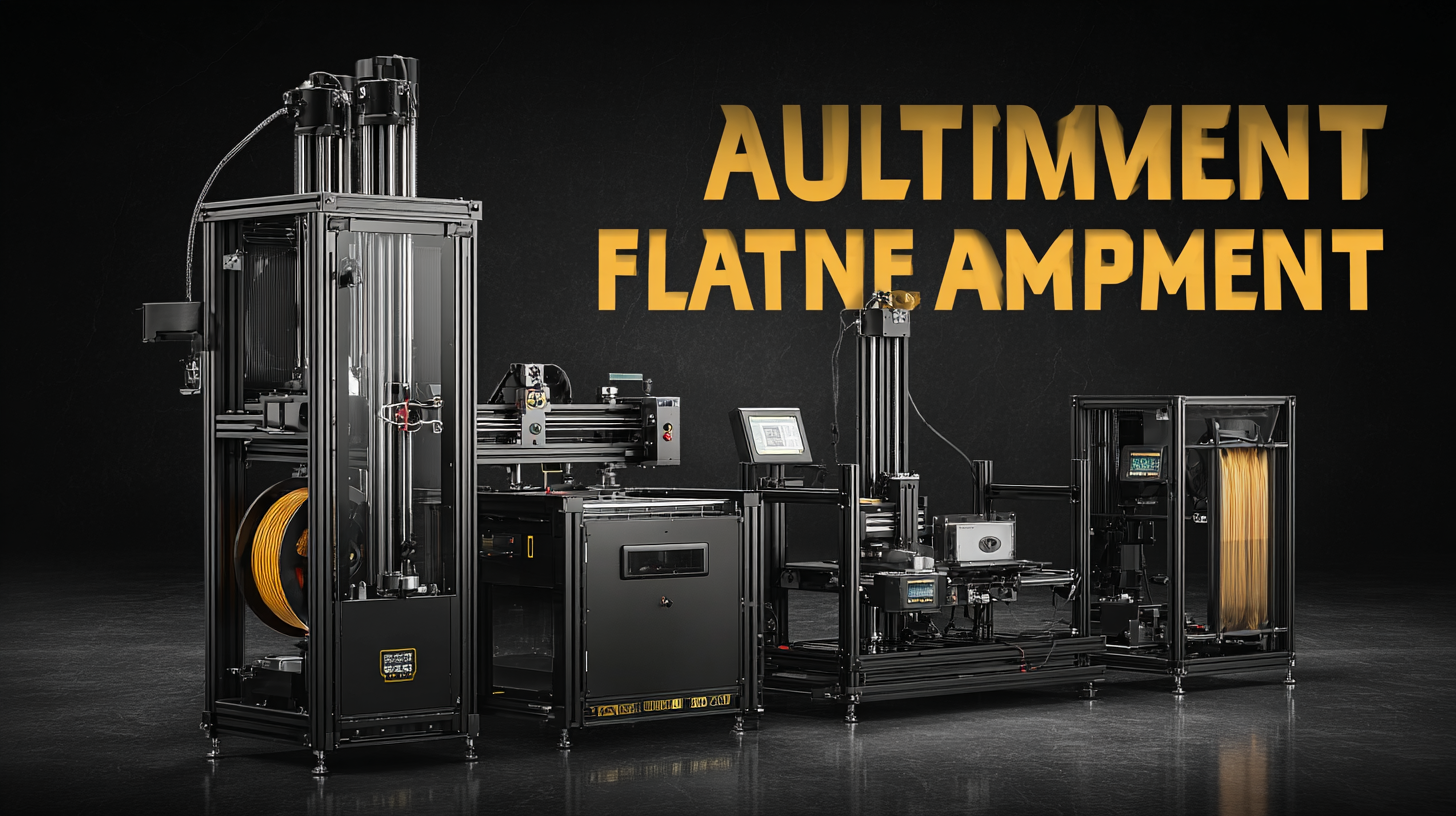Leave Your Message
In the rapidly evolving landscape of 3D printing, the emergence of Automatic Filament Equipment has transformed the way enthusiasts and professionals approach their projects. As we step into 2023, maximizing efficiency is more crucial than ever, especially with the increasing demand for quality and rapid production times. This ultimate guide aims to delve into the best Automatic Filament Equipment available this year, showcasing innovative features that streamline the printing process. From filament handling to enhanced calibration options, the advancements in technology not only save time but also reduce material waste, making them indispensable tools in any 3D printing arsenal. Join us as we explore how you can leverage these cutting-edge solutions to elevate your 3D printing game and achieve unparalleled results.

When it comes to enhancing productivity in your 3D printing endeavors, selecting the right automatic filament equipment is crucial. One of the top features to look for is precision feeding. A reliable feeding mechanism ensures that filaments are fed consistently and accurately, minimizing the risk of jams and ensuring smooth operation. This not only streamlines your workflow but also enhances the overall quality of your prints. Additionally, a monitoring system that tracks filament usage in real-time can significantly boost your efficiency, allowing for proactive management of materials and reducing downtime.

Another vital feature to consider is compatibility with various filament types. The best automatic filament equipment should be versatile enough to handle a range of materials, including PLA, ABS, and specialty filaments. This flexibility allows you to take on a wider variety of projects without the need for constant adjustments or equipment swaps. Finally, ease of maintenance is essential; look for equipment that offers straightforward cleaning and replacement options to minimize interruptions in your production process. By prioritizing these features, you can significantly enhance your productivity and achieve better results in your projects.
When it comes to automatic filament equipment, various brands vie for the top spot, each offering unique features and benefits that cater to different needs. In 2023, the landscape is as competitive as ever, with several leading brands competing for supremacy in efficiency and innovation. To determine which equipment truly reigns supreme, it’s essential to scrutinize hand-picked models based on criteria such as build quality, ease of use, and technological advancements.
This year's focus on maximizing efficiency has led brands to enhance their products with automation capabilities, reducing manual intervention and improving overall workflow. Users need to consider factors like speed, compatibility with various filament materials, and customer support when making their choices. As brands continue to innovate, the most suitable equipment will ultimately depend on the specific needs of users—be it hobbyists or professionals—ensuring that this battle for the best automatic filament equipment remains intriguing and dynamic. Comparing these options in depth can help potential buyers make an informed decision that aligns with their production goals.
This chart compares the efficiency ratings of various automatic filament options, illustrating the performance differences. The highest-rated filament, Filament E, achieves a remarkable rating of 92, whereas Filament C shows the lowest efficiency at 78.
Investing in automatic filament equipment can seem daunting, especially when balancing initial costs against potential long-term savings. One of the main advantages of such equipment is the significant reduction in labor costs. By automating the filament production process, businesses can streamline operations and reduce the need for manual intervention, allowing staff to focus on more strategic tasks. This not only boosts overall productivity but also minimizes errors that can occur with manual handling, directly impacting the quality and consistency of the final product.
Moreover, the efficiency gains from automatic filament machinery can lead to enhanced production output. Higher throughput means businesses can capitalize on demand without compromising quality. While the upfront investment might be substantial, the decrease in waste and improved operational efficiency often results in quicker return on investment (ROI). Additionally, automatic equipment tends to be more energy-efficient, leading to lower utility bills over time. Therefore, for businesses looking to maximize their efficiency and set themselves apart in a competitive market, investing in automatic filament technology can indeed be worth it.
Maintaining your automatic filament equipment is crucial for ensuring optimal performance and longevity. Regular cleaning is one of the simplest yet most effective maintenance practices. Dust and debris can accumulate on various parts, potentially leading to clogging or reduced efficiency. It’s advisable to set a routine schedule for cleaning, using proper tools and materials to avoid damaging delicate components. Additionally, lubricating moving parts according to the manufacturer's guidelines can help minimize wear and tear, ensuring smoother operation.
Another vital aspect of maintenance is regular calibration. Automatic filament equipment often relies on precise settings to function efficiently. Over time, these settings may drift, leading to inconsistencies in print quality. By routinely checking and recalibrating your equipment, you can maintain high standards of production and reduce waste. Keeping a log of maintenance activities, including cleaning and calibration dates, can further assist in tracking the performance of your equipment and highlighting any potential issues before they escalate.
| Equipment Type | Max Speed (mm/s) | Filament Diameter (mm) | Recommended Maintenance Frequency | Common Issues |
|---|---|---|---|---|
| Automatic Filament Extruder | 60 | 1.75 | Monthly | Clogging, Inconsistent Diameter |
| Automatic Filament Spooler | 50 | 2.85 | Bi-Weekly | Tension Issues, Spooling Errors |
| Automatic Filament Cutter | 40 | 1.75 | Quarterly | Blade Dullness, Jamming |
| Automatic Filament Mixer | 70 | 1.75 | Yearly | Uneven Mixing, Mechanical Failures |
As we move toward 2024, the advancements in filament technology are set to redefine the landscape of 3D printing. With significant market growth projected, particularly in the automatic filament equipment sector, understanding these future trends is crucial for manufacturers and enthusiasts alike. Innovations in materials, like nylon 6 and multi-jet fusion techniques, are paving the way for more versatile and efficient production processes.
Tip 1: Stay informed about emerging materials that enhance durability and flexibility. Analyzing the properties of new filament types can lead to superior print quality and extended applications in various industries.
The anticipated increase in the automotive ball screw market and the ongoing investment in humanoid robotics signal a broader shift toward automation. These trends suggest that efficiency and precision will be paramount in the production processes.
Tip 2: Embrace automation by integrating advanced filament equipment in your workflow. This not only optimizes production efficiency but also reduces waste and ensures consistent quality in your 3D printing projects.
Looking forward, keeping an eye on the evolving technologies and market shifts will be vital in harnessing the full potential of filament advancements in 2025 and beyond.

